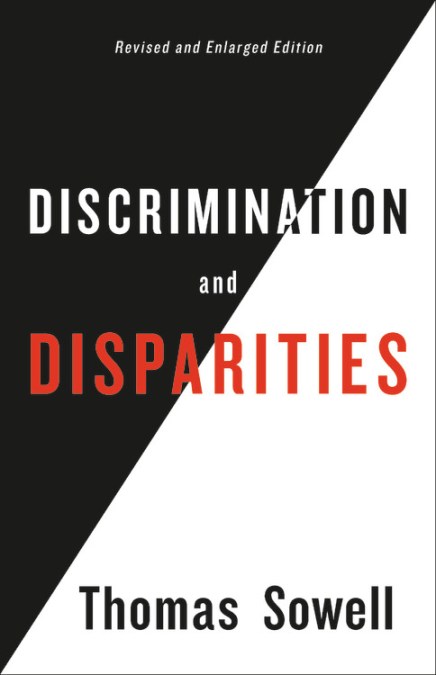The Ethics of Direct-to-Consumer Testing
13 de desembre 2021
12 de desembre 2021
The value of direct-to-consumer tests
Direct-to-Consumer Tests on the Market Today. Identifying Valuable Tests from Those with Limited Utility
For health care professionals, the analytical validity of DTC tests is a primary concern. Analytical validity of DTC genetic testing can be defined by analytical sensitivity and specificity whereby analytical sensitivity is defined as how often a test is positive when the genetic variant of interest is present in the tested sample, and the analytical specificity is defined as how often a test result is negative when the tested sample does not contain the genetic variant of interest.18 A recent study by Tandy-Connor and colleagues19 “indicated that 40% of variants in a variety of genes reported in DTC raw data were false positives” when compared with clinical confirmatory testing. This study highlights the need to scrutinize the analytical validity of DTC genetic testing and consider confirmatory testing in a clinical diagnostic genetics laboratory.
Per the American Society of Human Genetics, “companies offering DTC genetic testing should disclose the sensitivity, specificity and predictive value of the test, and the populations for the information is known, in a readily understandable and accessible fashion.”
Unfortunately, nobody cares about it, and the regulator is still on vacation.
11 de desembre 2021
Intellectual property rights and wrongs
COMUNICACIÓN DE LA COMISIÓN AL PARLAMENTO EUROPEO, AL
CONSEJO, AL COMITÉ ECONÓMICO Y SOCIAL EUROPEO Y AL COMITÉ DE
LAS REGIONES. Aprovechar al máximo el potencial innovador de la UE:
un plan de acción en materia de propiedad intelectual e industrial para apoyar la
10 de desembre 2021
The pandemic's true death toll
09 de desembre 2021
07 de desembre 2021
Fallacies, differences and discrimination
Discrimination and Disparities
Economic and other outcomes differ vastly among individuals, groups, and nations. Many explanations have been offered for the differences. Some believe that those with less fortunate outcomes are victims of genetics. Others believe that those who are less fortunate are victims of the more fortunate.
Discrimination and Disparities gathers a wide array of empirical evidence to challenge the idea that different economic outcomes can be explained by any one factor, be it discrimination, exploitation, or genetics. This revised and enlarged edition also analyzes the human consequences of the prevailing social vision of these disparities and the policies based on that vision--from educational disasters to widespread crime and violence.
This edition takes on other widespread fallacies, including a non sequitur underlying the prevailing social vision of our time—namely, that if individual economic benefits are not due solely to individual merit, there is justification for having politicians redistribute those benefits.
Each fallacy seems plausible on the surface, but that is what makes it worthwhile to scrutinize both their premises and the underlying facts. Many other new issues are addressed in this edition—in an international context, as in the first edition—but these two fallacies seem to be at the heart of much, if not most, of the prevailing social vision, sometimes summarized as “social justice.”
05 de desembre 2021
Soft budget constraint
Understanding the Soft Budget Constraint
The ‘softening’ of the budget constraint appears when the strict relationship between the expenditure and the earnings of an economic unit (firm, household, etc.) has been relaxed, because excess expenditure will be paid by some other institution, typically be the paternalistic State. The higher the subjective probability that excess expenditure will be covered by external assistance, the softer the budget constraint. The main focus of the paper is on the firm. There are several ways of ‘softening’ the budget constraint: subsidies, tax-exemptions, soft credits and so on. The softness weakens price responsiveness, leads to losses in efficiency and under certain conditions may generate excess demand. The paper examines the ‘soft budget constraint’ syndrome in Hungary, Yugoslavia, and China, i.e. in the economies pioneering in the introduction of market-oriented decentralization reforms. Socialist economies exhibit a rather extreme degree of this phenomenon, which to a lesser degree can be observed in mixed economies as well.
Janos Kornai coined the term "soft budget constraint" and it remains as a nowadays concept. Now that Janos passed away it is a good moment to remember its impact, also in health policy.
03 de desembre 2021
01 de desembre 2021
Bioethics for lab medicine
Ethics for Laboratory Medicine
Key issues:
Table 1.Ethical Issues of particular importance in Laboratory medicine.
Informed consent
Use of leftover specimens
Biobanking
Genetic testing
Equity and access to laboratory testing
Incidental findings and medically actionable results
DTC testing
Transfusion medicine and religious or ethical restrictions
Disclosing medical error
Emerging infectious diseases
Test utilization
The unique role of laboratorians, who care for patients but interact mainly with their samples rather than the person, creates distinct ethical dilemmas. In addition, laboratories function as critical parts of complex health systems, and the interaction of the laboratory with the greater healthcare system creates additional points of ethical friction (45). Clinical laboratory professionals are ethically bound to use our voices to advocate for excellence in patient care in the realms of respect for persons, beneficence, and justice, even in the face of technological, administrative, and, perhaps, clinical pressures to do otherwise.
Ethics represents moral principles based on cultural norms and values. Sometimes these moral values have been turned into federal or state laws or into local rules and regulations. However, laws and rules may be absent or difficult to apply to a given situation. When faced with ethical decisions, laboratorians should seek the input from other clinicians and laboratory colleagues. In addition, most hospitals have ethics boards comprising multidisciplinary teams of clinicians, lay people, and clergy to help guide decision-making.
27 de novembre 2021
Choosing how to choose (2)
The elements of choice: why the way we decide matters
A book on choice architecture. In the last chapter:
Having looked, throughout this book and in this chapter, at choice architecture, both good and bad, there are three things that we should consider going forward:
Choosers are unaware of the effects of choice architecture and do not respond to warning.
Designers can underestimate the effects of choice architecture.
Choice architecture has a larger effect on the most vulnerable.
If these three statements are true, what should we do? One place to start is educating designers and choosers. The education I have in mind is not just pointing out choice architecture and its effects, but also providing an understanding how it works.
26 de novembre 2021
Mental health challenges
From Awareness to Change in Integrated Mental Health, Skills and Work Policies
1 What does a mental health-in-all-policies approach look like?
2 What are current social and labour market outcomes for persons with mental health conditions?
3 How far have we come in implementing integrated mental health, skills and work policies?
4 What are the implications and lessons of the COVID-19 pandemic for integrated mental health, skills and work policy?
A timely OECD report 5 years after the approval of the Recommendation on Integrated Mental Health, Skills and Work Policy. Unfortunately many countries still have to apply them...
25 de novembre 2021
AI everywhere (8)
A useful introductory book with this contents:
1 What Is a Virtual Assistant?
2 AI and Machine Learning
3 Speech Recognition
4 Natural Language Understanding
5 Natural Language and Speech Generation
6 The Dialog Manager
7 Interacting with an Assistant
8 Conclusions
24 de novembre 2021
The urgent answer to the coming black box medicine
Black box medicine and transparency
The series of reports Black Box Medicine and Transparency examines the human interpretability of machine learning in healthcare and research:
1. Machine learning landscape considers the broad question of where machine learning is being (and will be) used in healthcare and research for health
2. Interpretable machine learning outlines how machine learning can be or may be rendered human interpretable
3. Ethics of transparency and explanation asks why machine learning should be made transparent or be explained, drawing upon the many lessons that the philosophical literature provides
4. Regulating transparency considers if (and to what extent) does the General Data Protection Regulation (GDPR) require machine learning in the context of healthcare and research to be transparent, human interpretable, or explainable
5. Interpretability by design framework distils the findings of the previous reports, providing a framework to think through human interpretability of machine learning in the context of healthcare and health research
6. Roundtables and interviews summarises the three roundtables and eleven interviews that provided the qualitative underpinning of preceding reports
Each report interlocks, building on the conclusions of preceding reports.
Meanwhile you can start with the executive summary. Does anybody care about it?
23 de novembre 2021
Payment systems during the pandemic
Key messages:
•Públic payers assumed most of the COVID-19-related financial risk.
•Income loss was not a problem when providers were paid by salary, capitation or budgets.
•Providers paid based on activity were compensated through budgets or higher fees.
•New FFS payments were introduced to incentivize remote services.
•Payments for COVID-19 related costs included new fees, per-diem and DRG tariffs.













